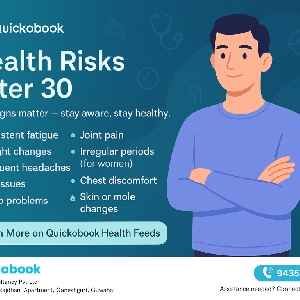Introduction
Hepatitis A, a highly contagious viral liver infection, continues to pose a significant risk to India’s children. While many believe Hepatitis A is mild or harmless, the reality is different. Thousands of children across India suffer from severe Hepatitis A infections every year, leading to hospitalisation, prolonged jaundice, dehydration, liver inflammation, and financial burden on families. Despite being vaccine-preventable, Hepatitis A is still not included in India’s Universal Immunisation Programme (UIP).
At a time when India is working toward stronger public health systems and better child protection, the question becomes increasingly relevant: Why is Hepatitis A not yet part of the national vaccination schedule? And more importantly, why should it be included now?
This blog dives into the science behind Hepatitis A, its impact on children, the burden on Indian families, gaps in current prevention strategies, and the strong case for adding the Hepatitis A vaccine to India’s universal immunisation plan. Written in simple, patient-friendly language, this guide aligns with the growing need for awareness and action.
Understanding Hepatitis A
Hepatitis A is a viral infection that causes inflammation of the liver. Unlike Hepatitis B or C, it does not cause chronic infection, but it can still be severe—especially in children and adolescents.
The Hepatitis A virus (HAV) spreads through the faecal-oral route, meaning it is transmitted via contaminated water, food, surfaces, or close contact with an infected person.
Common sources include:
-
Contaminated drinking water
-
Unsafe street food
-
Unhygienic food handling
-
Poor sanitation and open defecation
-
Inadequate handwashing
-
Infected household contacts
Young children are especially vulnerable because they often share food, play outdoors, and may not maintain proper hygiene.
Why Hepatitis A Remains a Major Concern in India
Despite improvements in sanitation, India continues to struggle with waterborne diseases. Hepatitis A cases are common in:
-
Urban slums
-
Rural villages
-
Areas with poor sewage systems
-
Schools with inadequate sanitation
-
Regions affected by floods or water contamination
Children aged 1–15 years form the highest risk group because they are more exposed to contaminated environments and have developing immunity.
Recent outbreaks in several Indian states highlight that Hepatitis A is far from controlled.
The Impact of Hepatitis A on Child Health
Hepatitis A may be mild in some cases, but many children develop severe symptoms requiring hospitalisation.
Common symptoms include:
-
High fever
-
Jaundice (yellow eyes/skin)
-
Loss of appetite
-
Fatigue
-
Nausea
-
Abdominal pain
-
Dark urine
-
Clay-coloured stools
-
Vomiting
-
Dehydration
Severe cases may lead to liver failure, though rare.
Even in mild cases, recovery may take 4–8 weeks, disrupting school, daily routine, nutrition, and growth.
Economic and Social Burden on Families
Hepatitis A can drain a family’s resources through:
-
Hospitalisation costs
-
Diagnostic tests
-
Medication
-
Time off from work
-
Nutrition support
-
Follow-up visits
For low-income families, a severe case of Hepatitis A can lead to loan-taking or financial instability.
Preventing the disease through vaccination is more cost-effective and reduces long-term health expenses.
Hepatitis A Is Entirely Vaccine-Preventable
One of the strongest arguments for including Hepatitis A in the UIP is that the disease can be completely prevented through vaccination.
The vaccine:
-
Is highly effective
-
Provides long-term immunity
-
Is safe for children
-
Requires only 1 or 2 doses depending on brand
-
Has minimal side effects
Countries like the USA, Israel, China, and many Latin American nations have already included Hepatitis A in their national vaccination schedules—and have seen dramatic reductions in cases.
India can achieve the same outcome.
Gaps in the Current Prevention Strategy
Currently, India relies on:
-
Hygiene measures
-
Water purification
-
Handwashing
-
Food safety practices
While essential, these methods are not enough. India still faces:
-
Water contamination
-
Sewage leaks
-
Overcrowded living conditions
-
Inconsistent sanitation infrastructure
-
Lack of hygiene awareness
Thus, prevention cannot depend solely on environmental control. Vaccination offers an additional and more reliable layer of protection.
Why Hepatitis A Should Be Added to the Universal Immunisation Programme
There are several strong, evidence-based reasons:
High Disease Burden in Children
A large percentage of reported Hepatitis A cases are in children below 15 years. UIP focuses heavily on child health, making Hepatitis A vaccination a logical addition.
Increasing Severity Among Older Children
Previously, Hepatitis A was mostly mild in young children, but now infections are shifting to older age groups (8–15 years), where symptoms are more severe.
Water and Food Hygiene Challenges
Despite Swachh Bharat improvements, contaminated water sources and unsafe street food remain widespread, especially in villages and urban slums.
Affordability and Accessibility
Private Hepatitis A vaccines can cost ₹1,200–₹2,200 per dose. For many families, this is expensive, preventing widespread coverage.
Including it in UIP ensures free and equitable access.
Outbreak Control
Including the vaccine can drastically reduce seasonal outbreaks in:
-
Schools
-
Communities
-
Flood-prone areas
-
Rural and tribal regions
Strengthening Child Health Outcomes
The inclusion supports India’s goals of reducing:
-
Childhood illness
-
Malnutrition
-
Stunted growth
-
School absenteeism
Reduced Long-Term Complications
Though rare, acute liver failure in children is serious and expensive to treat. Prevention is far safer.
How Adding Hepatitis A Vaccine Helps India’s Public Health Goals
-
Supports child health and nutrition
-
Strengthens immunity in vulnerable groups
-
Reduces hospital burden
-
Prevents waterborne disease outbreaks
-
Supports SDG-3 (Good Health and Well-being)
-
Helps control viral hepatitis spread
-
Reduces health inequity
Vaccination Schedule for Hepatitis A
While UIP does not yet include the vaccine, private pediatricians recommend:
-
First dose: age 12–18 months
-
Second dose: 6–12 months later (depending on brand)
Some brands require only one dose, but many follow a two-dose schedule for long-term immunity.
Always consult a doctor for exact timing.
Safety and Side Effects of the Vaccine
The Hepatitis A vaccine is extremely safe. Side effects are usually mild:
-
Slight pain at injection site
-
Mild fever
-
Irritability in infants
-
Temporary tiredness
Serious reactions are extremely rare.
Hygiene and Lifestyle Tips in Addition to Vaccination
-
Drink boiled or purified water
-
Avoid eating raw street food
-
Wash hands before meals
-
Clean fruits and vegetables thoroughly
-
Avoid sharing utensils
-
Keep toilets clean
-
Teach children hygiene habits early
Vaccination + hygiene together offer strong protection.
Why Universal Immunisation Works Better Than Selective Vaccination
Selective vaccination leads to:
-
Uneven coverage
-
Higher outbreak risk
-
Weak protection for low-income families
Universal Immunisation Programme ensures:
-
Large-scale coverage
-
Herd immunity
-
Cost reduction
-
Lower disease burden nationwide
This makes the programme the most effective long-term solution.
When to See a Doctor
Seek medical help if a child develops:
-
Persistent fever
-
Jaundice
-
Dark urine
-
Pale stools
-
Severe abdominal pain
-
Vomiting
-
Extreme fatigue
-
Poor appetite
Early treatment prevents complications.
Complications of Hepatitis A in Children
Most children recover fully, but complications can include:
-
Severe dehydration
-
Prolonged jaundice
-
Liver inflammation
-
Rare acute liver failure
-
School absence affecting growth and learning
Vaccination prevents all of these.
50 FAQs on Hepatitis A and Child Health
-
What is Hepatitis A?
A viral liver infection spread through contaminated food and water. -
How does Hepatitis A spread?
Through the faecal-oral route from contaminated sources. -
Why are children more vulnerable?
Their immunity is still developing and hygiene habits may be inconsistent. -
Is Hepatitis A dangerous?
It can be mild but often causes severe illness in older children. -
Can Hepatitis A cause liver failure?
Rarely, but it is possible in severe cases. -
How long do symptoms last?
Usually 2–8 weeks. -
Is Hepatitis A common in India?
Yes, especially in areas with sanitation issues. -
What are common symptoms?
Jaundice, fever, abdominal pain, fatigue, vomiting. -
How is Hepatitis A diagnosed?
Through liver function tests and specific blood tests. -
Can Hepatitis A be prevented?
Yes, completely through vaccination. -
Is the Hepatitis A vaccine safe?
Yes, it is very safe with mild side effects. -
When should children get the vaccine?
Usually at 12–18 months, with a booster later. -
How many doses are needed?
Most brands need 2, some need only 1. -
Is the vaccine available in government hospitals?
Not yet under UIP, mostly available privately. -
Why is the vaccine not in UIP yet?
Due to cost and policy priorities. -
Should it be added to UIP?
Yes, to protect more children. -
Is Hepatitis A contagious?
Yes, highly contagious. -
Can adults get Hepatitis A?
Yes, but it is more severe in older age groups. -
Can vaccinated children get Hepatitis A?
Very unlikely. -
Can Hepatitis A spread at school?
Yes, through contaminated surfaces or food. -
Is street food a major cause?
Yes, especially if hygiene is poor. -
Can water contamination cause outbreaks?
Yes, commonly during monsoons and floods. -
Can Hepatitis A be fatal?
Rarely, but complications can be serious. -
Can breastfeeding mothers vaccinate children?
Yes, it is safe. -
Can Hepatitis A cause long-term liver problems?
No, it does not become chronic. -
How long does immunity last?
Many years, often lifelong. -
Can adults take the vaccine?
Yes, especially if travelling or at risk. -
Does boiling water kill the virus?
Yes, boiling kills HAV. -
Are fruits safe for children?
Yes, after proper washing. -
Can Hepatitis A spread through touch?
Indirectly, via contaminated surfaces. -
Do all children need the vaccine?
Yes, for prevention. -
Does handwashing help?
Yes, significantly reduces risk. -
Can Hepatitis A spread through swimming pools?
Only if poorly maintained. -
Can Hepatitis A affect growth?
Prolonged illness may affect nutrition temporarily. -
What food should be avoided?
Raw street food, unwashed fruits, uncooked items. -
Is Hepatitis A curable?
Yes, it resolves with supportive care. -
Do antibiotics work?
No, because it is a viral infection. -
What is the treatment?
Rest, hydration, medication for symptoms. -
Does Hepatitis A cause nausea?
Yes, vomiting and nausea are common. -
Should children rest during infection?
Yes, rest is essential for recovery. -
Can school children spread it?
Yes, it spreads easily. -
Is vaccination cost-effective?
Yes, cheaper than hospital treatment. -
Do teenagers need the vaccine?
Yes, especially if not vaccinated earlier. -
Can Hepatitis A be serious during puberty?
Yes, older children face more severe symptoms. -
Can Hepatitis A and E occur together?
Yes, co-infections can be severe. -
Is the vaccine painful?
Only mild discomfort. -
Can parents also get vaccinated?
Yes, especially if exposed. -
Can one get infected twice?
Very rare after natural infection. -
Why focus on child health?
Children form the highest risk group. -
Why should it be included in UIP?
To protect all children, prevent outbreaks, and reduce healthcare costs.
Conclusion
Hepatitis A is a growing public health concern in India, especially for children. While the infection is preventable through vaccination, accessibility remains unequal. Including the Hepatitis A vaccine in India’s Universal Immunisation Programme can protect millions of children, reduce outbreaks, prevent hospitalisations, and improve long-term child health outcomes.
It is time India strengthens its immunisation strategy by making the Hepatitis A vaccine universally available.
Quickobook CTA
Worried about Hepatitis A symptoms or vaccination for your child?
Book a consultation with a Pediatrician, General Physician, or Gastroenterologist on Quickobook.
Fast appointments. Verified doctors. Easy follow-ups.
Disclaimer:
This blog is for educational purposes only and not a substitute for medical advice. Always consult a qualified doctor for diagnosis and treatment.









Comments (0)
No comments yet. Be the first to share your thoughts!
Leave a Comment